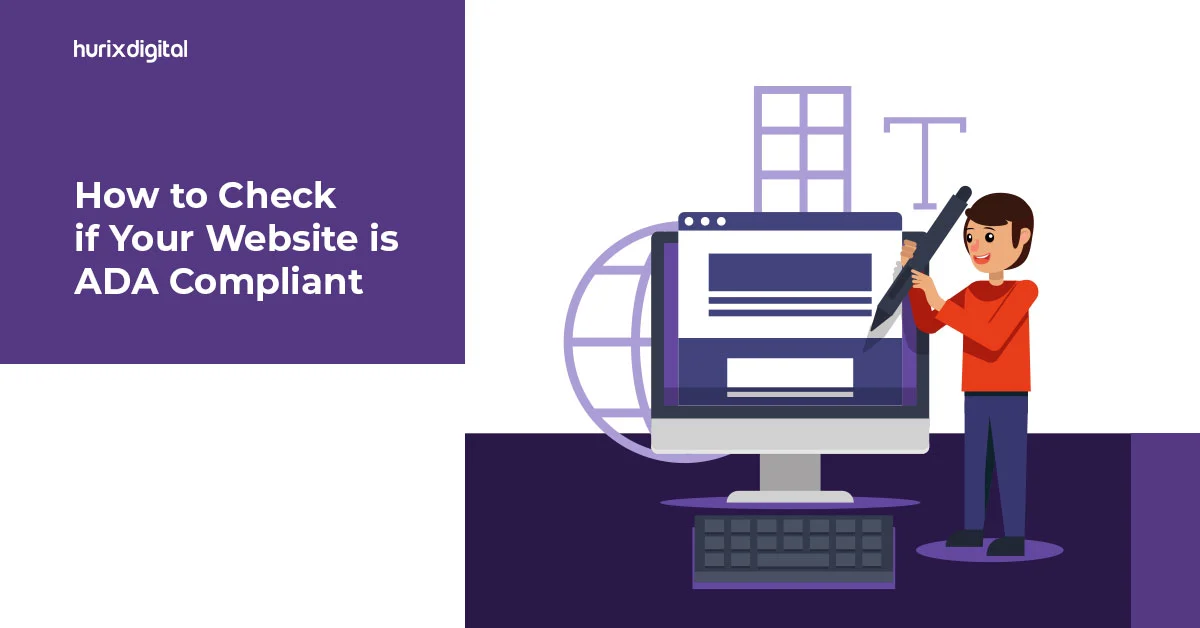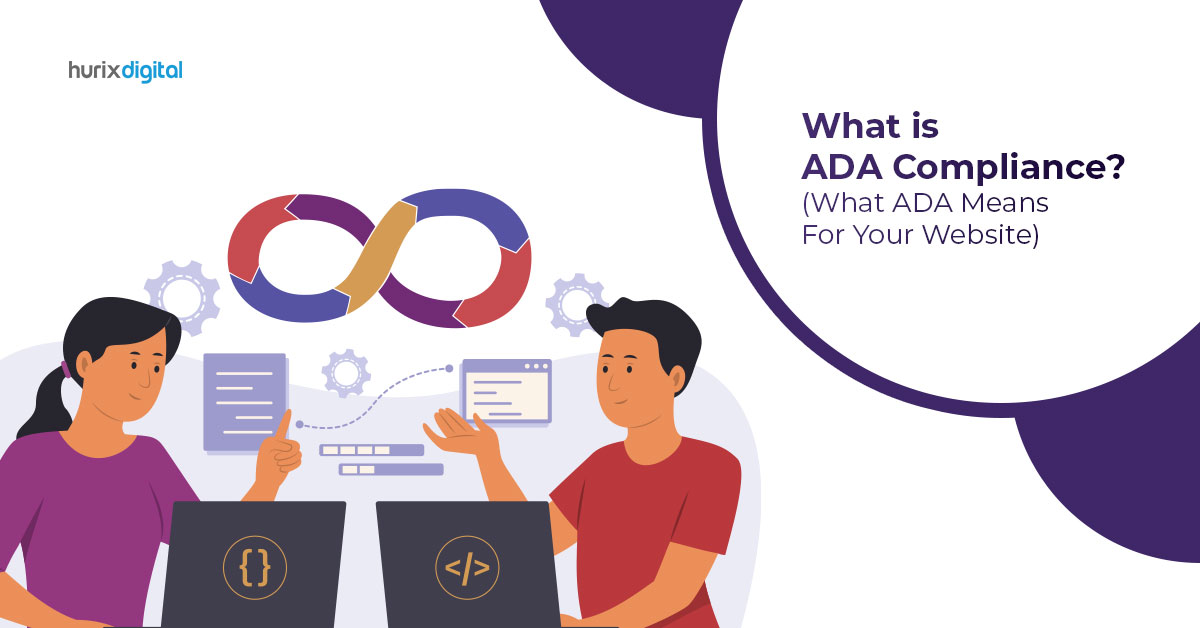
How to Check if Your Website is ADA-Compliant?
Summary
The blog post offers a comprehensive guide on checking the ADA compliance of a website. It outlines key accessibility standards and guidelines, provides tips for conducting manual inspections, and suggests automated tools for evaluating accessibility.
ADA compliance on websites has become a major accessibility concern for businesses. If you’re wondering, “is my website ADA compliant?”, this guide will help you understand how to check and ensure ADA compliance for your site.
ADA compliance means meeting the standards set by the Americans with Disabilities Act (ADA), known as the Standards for Accessible Design. The Act lays down standards for accessibility in electronic and information technology, particularly website accessibility.
The website accessibility rules in the ADA apply to almost all businesses and web developers. You can check ADA compliance using an ADA-compliant website checker.
To comply with the Act, the information on your website has to be easy to access for people with disabilities. For instance, visually impaired people should be able to read your content using a text reader, browse through categories, and shop for products. You can ensure this through ADA compliance testing.
Read on to learn more.
Table of Contents:
- How to Check ADA Compliance?
- What are the Best Practices for ADA Compliance?
- Why is ADA Compliance Important?
- Case Studies to Explore
- Summing Up
How to Check ADA Compliance?
There are different ways to check whether your site is ADA-compliant, which are listed below.
1. Online Tools
There are online ADA compliance checkers such as WAVE and Lighthouse. These tools check certain features on your site, such as the color contrast, the size of the text, image alt text, and more. These online checkers can be used to assess one page at a time.
There are several web accessibility solutions that you can consider using to check your site for ADA compliance. Some tools focus on specific compliance aspects, such as color contrast.
Online tools like WAVE assess and grade your website according to a list of criteria that are based on ADA compliance requirements. There are also online tools that help you check how your website performs through a web accessibility report or evaluation.
There are free and paid options available.
For instance, you can enter a URL, and the tool will generate an accessibility report. This can help you check whether your site is accessible and what changes you need to incorporate for ADA web compliance.
2. Manual Assessment
You can also check if your website is ADA-compliant manually. A manual assessment involves checking each page of your website for accessibility.
You can do this using the Web Content Accessibility Guidelines (WCAG), which contain a checklist for ADA compliance.
There are four main principles for ADA compliance. These are given below. A WCAG compliance checker will check your website to ensure it meets the guidelines.
All the information and user interface features should be visible or perceivable. This includes text, images, and video.
If it is not possible to view it directly, an alternative option should be provided, like a transcript for a video.
Users should be able to use the interface easily. Any interactions or operations that cannot be performed should be removed.
People who visit your website should be able to navigate it and use its features.
The information and user interface should be easy to understand. The website and its content should be accessible.
For instance, this can be done by adding instructions for how to use a feature on the website.
The content should be robust, which means that different kinds of users should be able to use it. The website should provide different site visitors with the same experience.
For example, a video transcript should cover all the content of the video.
3. Professional Assessment
In most cases, manual accessibility testing is not feasible for a business. Given the consequences of not complying with ADA standards, it is worth considering a professional audit to ensure your website is ADA-compliant.
You can hire a professional web design agency to build an ADA-compliant website. Or else, you can hire an accessibility agency to audit your existing website for ADA compliance.
Also Read: The Importance of ADA Compliance for Website Owners
What are the Best Practices for ADA Compliance?
1. Accessible Content
Some ways to ensure that your content is accessible are given below:
- Keep sentences short so they are easy to read
- Use bullet points instead of long paragraphs
- Use bold for important phrases
- Use headings with a proper heading structure
2. Add Alt Text to Your Media Content
Adding alt text to images, audio, video, and controls ensures that viewers can read a description of the content even if they cannot hear it or see it properly.
Screen reader users may become irritated by lengthy alt text and may have it cut away. Generally speaking, the alt text should not exceed 125 characters. You can apply one of the lengthy description techniques covered within “intricate pictures and pictures of text” later in this section if more than a simple phrase is required.
3. Use Color Contrast
An ADA-compliant website checker will check color contrast. Color contrast is an important part of user-friendly design and makes your website more visually accessible.
To attain Level AA compliance with the Web Content Accessibility Guidelines (WCAG), you need:
- A contrast ratio of at least 4.5:1 for normal text
- A contrast ratio of 3:1 for wide text
Red and green text are frequently used on websites to denote achievement or failure communications. Nonetheless, the most prevalent type of color vision impairment is red-green color blindness (CVD).
4. Provide Transcripts and Captions
Transcripts and captions for audio and video content ensure that people with hearing impairments can still read the content.
A basic transcript is a text rendition of the speech and non-speech audio data required to comprehend the content. Descriptive transcripts also include text descriptions of the visual details required to comprehend the content.
For instance, leading e-learning platforms can ensure that users with hearing impairments can access the information presented in the videos. Transcripts also benefited users who preferred reading over watching videos.
5. Use Descriptive Links and HTML Labels
Descriptive links tell viewers where a link will lead them. HTML labels indicate what the function of a button is.
For example, an “x” sign indicates clicking on it will close the pop-up.
Why is ADA Compliance Important?
ADA compliance is critical, not just because it is legally required. It also has several benefits for your business website and your customers.
1. It Promotes Equal Access
If your website is ADA-compliant, it is rendered more inclusive not only for people with disabilities but also for a broader range of people in general.
This also improves your brand’s image and reach.
2. It Avoids Legal Penalties
8,227 lawsuits under Title III of the Americans with Disabilities Act (ADA) were brought in federal court in 2023. Ensuring ADA compliance helps avoid legal penalties and costly lawsuits.
In addition to legal fees, you may incur costs in settlements and rebuilding your website.
3. It Improves the User Experience
There are sound commercial reasons to ensure that your website is accessible in addition to avoiding lawsuits. WCAG 2-compliant digital products surpass rivals in the market by a factor of 50%.
The explanation is straightforward: approximately 25% of your prospective clients won’t be competent to use your website, which prevents them from the following:
- Making purchases
- Reserving services
- Volunteering
- Donating
The more accessible your website is, the more users you can reach.
Case Studies to Explore
Here are two case studies that capture the essence of ADA compliance and how businesses have effectively addressed accessibility challenges:
1. Case Study 1: Domino’s Pizza Accessibility Lawsuit
Domino’s Pizza was sued in 2019 by a blind customer who claimed the company’s mobile app and website did not comply with the Americans with Disabilities Act (ADA). The court’s decision in the client’s favor emphasized the need for websites to be user-friendly for those with disabilities. Domino’s was mandated to comply with ADA standards for its online platforms.
The case served as a reminder to companies of how important it is to make sure their digital services are accessible to all users in order to avoid legal issues and grow their clientele.
2. Case Study 2: Walmart’s ADA Compliance Efforts
Walmart was sued in 2018 for not making its website accessible to people with impairments. In response, the business redesigned its website to comply with WCAG 2.1 guidelines and included features like keyboard navigation and screen reader assistance. Walmart’s measures enhanced consumer satisfaction and assisted in averting additional legal concerns. The makeover enhanced Walmart’s image and showed the company’s commitment to diversity.
Also Read: How to Make Your Website ADA/WCAG Compliant
Summing Up
ADA compliance helps your website stay legally compliant as well as user-friendly. Using an ADA-compliant website checker is one of the simplest ways to check ADA compliance.
Are you looking for accessibility solutions to make your website ADA-compliant? Head out to Hurix Digital!
We offer design solutions to help make your website more accessible and ensure ADA compliance. Contact us today to learn more!

Vice President – Digital Content Transformation. He is PMP, CSM, and CPACC certified and has 20+ years of experience in Project Management, Delivery Management, and managing the Offshore Development Centre (ODC).







